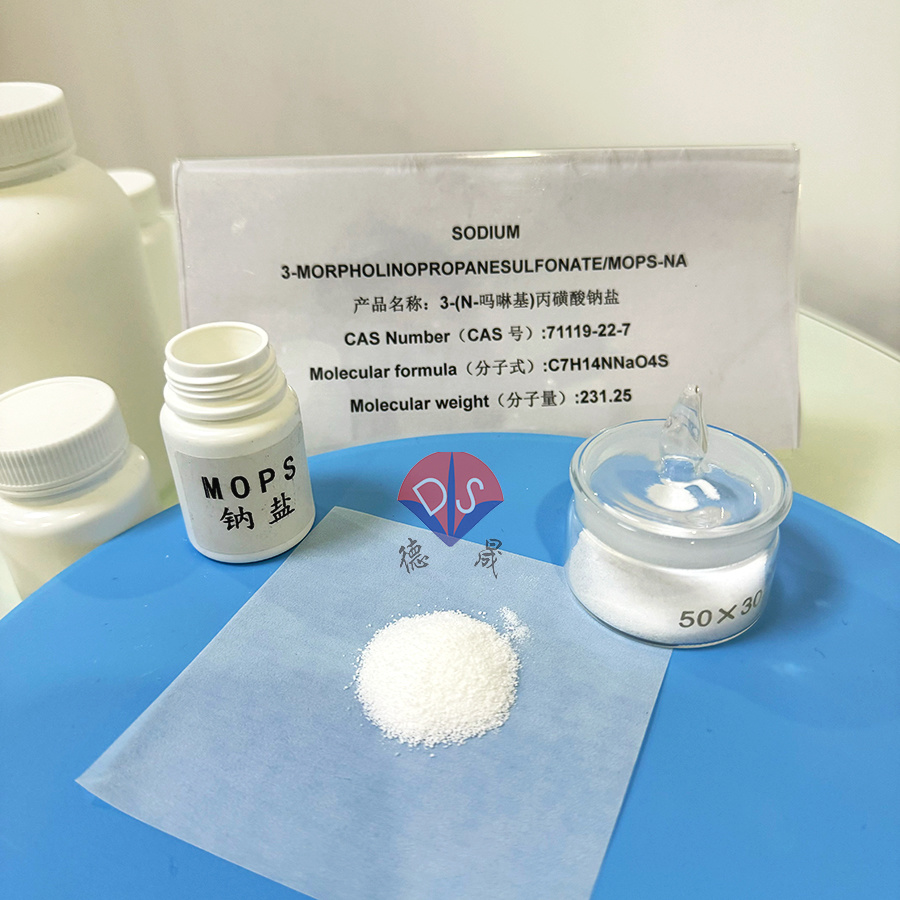Application and Value Analysis of MOPS Na in Cell Analysis Technology
Release time:
2025-10-21
In modern life science research and biomedical testing, cell analysis technology is an important means of understanding cell function and metabolic status. Maintaining the pH stability of the reaction system is one of the key factors ensuring data accuracy and experimental reproducibility in various validation experiments. In this context, the choice of buffer system is particularly important. MOPS-Na (sodium 3- (N-morpholino) propanesulfonate) is widely used as a zwitterionic buffer in various cell analysis experiments due to its good water solubility and stable buffering performance.

MOPS Na
1、 Basic physicochemical properties of MOPS Na
MOPS Na is the sodium salt form of MOPS, with a pKa value of approximately 7.2 (25 ° C). It has good buffering ability in the pH range of 6.5-7.9, covering the suitable pH range for most cellular physiological activities. Compared with traditional phosphate or Tris buffer solutions, MOPS Na has weaker chelating ability for metal ions and is less likely to interfere with enzymatic reactions or cell signaling processes that rely on divalent cations such as Mg ² ⁺ and Ca ² ⁺.
In addition, MOPS Na has high water solubility and can maintain clear solutions at high concentrations, making it difficult to precipitate crystals. The sulfonic acid group in its molecular structure gives it a certain polarity, but it does not penetrate the cell membrane, so it has less direct interference with cells in vitro experiments and is suitable for analysis systems that need to maintain cell activity.
2、 The role of flow cytometry and cell sorting
Flow cytometry requires samples to maintain cell integrity and dispersion during the detection process, while avoiding non-specific aggregation. The buffer prepared with MOPS Na can provide a stable ionic environment and reduce the aggregation phenomenon caused by changes in cell surface charge. In addition, prolonged operation during cell sorting may cause fluctuations in buffer pH, and the addition of MOPS Na helps to prolong system stability, improve sorting purity, and recovery rate.
It is worth noting that MOPS Na does not participate in cellular metabolic pathways and is not actively taken up or metabolized by cells. Its impact on cellular physiological status is relatively small in a short period of time, making it suitable for short-term processing and rapid analysis scenarios.
3、 Support enzyme-linked reactions and molecular detection
Many cell analysis techniques rely on enzymatic reactions, such as ELISA, intracellular kinase activity detection, or ATP assay. This type of reaction is sensitive to pH changes, and small deviations may lead to a decrease in enzyme activity or substrate conversion efficiency. MOPS Na is often chosen as a buffer medium for these reactions due to its low ion interference and stable buffering ability.
Research has shown that in certain protein kinase activity detection systems, using MOPS Na buffer can achieve higher reaction repeatability and sensitivity compared to phosphate buffer. This is mainly attributed to its lack of significant binding with metal cofactors, thereby ensuring the normal conformation and catalytic efficiency of the enzyme.
Hubei Xindesheng: A professional supplier of MOPS Na raw materials
With the continuous development of cell analysis technology, high-quality buffering agents are the foundation for ensuring the reliability of experimental results. Hubei Xindesheng focuses on the research and production of biological buffering agents and is one of the stable suppliers of MOPS Na. The company has a complete production process and strict quality control system, with high product purity and good batch consistency. It is widely used in scientific research, in vitro diagnostics, and biopharmaceuticals. Choosing MOPS Na from Hubei Xindesheng will help researchers build a more stable and reproducible experimental system.
Previous page
Previous page
Contact details
Contact number
Address: C8, Guanggu United Science and Technology City, Ezhou City, Hubei Province
Fax:0711-3704 589
Follow us



